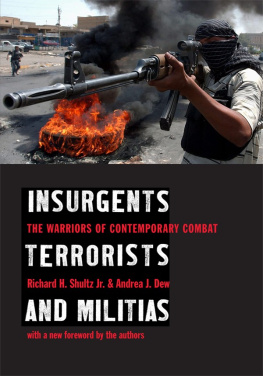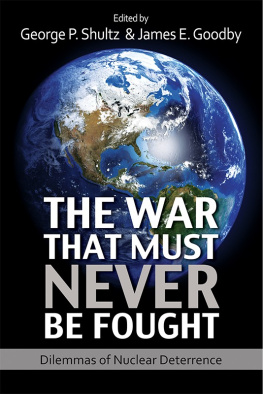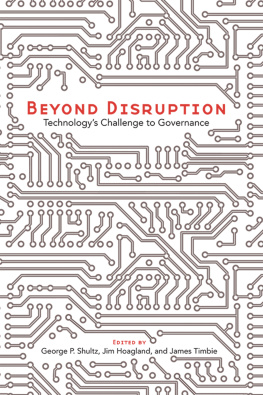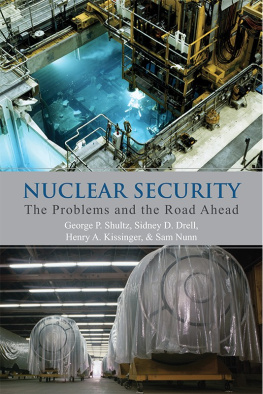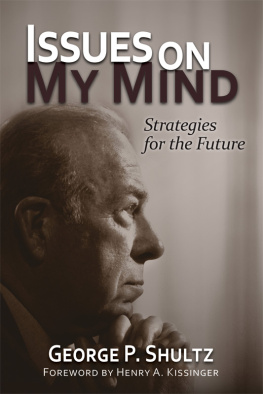INSURGENTS, TERRORISTS, AND MILITIAS
Iraqi Insurgents in Fallujah, 2004
Reproduced with kind permission from SITE Institute (The Search for International Terrorism Entities), a 501(c)(3) non-profit organization that provides information related to terrorist networks to the government, news media, and general public. www.siteinstitute.org.
Columbia University Press
Publishers Since 1893
New York, Chichester, West Sussex
cup.columbia.edu
Copyright 2006 Richard H. Shultz Jr. and Andrea J. Dew
All rights reserved
E-ISBN 978-0-231-50342-6
Library of Congress Cataloging-in-Publication Data
Shultz, Richard H., 1947
Insurgents, terrorists, and militias : the warriors of contemporary combat / Richard H. Shultz and Andrea J. Dew.
p. cm.
Includes bibliographical references and index.
ISBN 978-0-231-12982-4 (cloth : alk. paper) ISBN 978-0-231-12983-1 (pbk. : alk. paper)
1. Insurgency. 2. Terrorism. 3. Militia. 4. Paramilitary forces. 5. Asymmetric warfare. 6. Guerrilla warfare. 7. World politics1989 8. Military history, Modern20th century 9. Military history, Modern21st century I. Dew, Andrea J. II. Title.
U240.S34 2009
355.0218dc22
2009031805
A Columbia University Press E-book.
CUP would be pleased to hear about your reading experience with this e-book at .
References to Internet Web sites (URLs) were accurate at the time of writing. Neither the authors nor Columbia University Press is responsible for Web sites that may have expired or changed since the book was prepared.
In 2005, when we finished the manuscript for the hardcover edition of Insurgents, Terrorists, and Militias: The Warriors of Contemporary Combat, the United States was just starting to come to grips with the complexities of a post-9/11 international security environment that presented an array of new security challenges. This complicated new world included hostile and weak states, as well as non-state armed groups that proved themselves willing and able to employ a range of deadly asymmetrical and irregular warfare tactics against the U.S. and its allies. As argued in the hardcover edition, the strategic challenges many of these groups pose for the U.S. and other states are in the first instance political challenges. Their primary objective is not to destroy the military forces of their state adversaries or to capture territory, but rather to capture legitimacy or control over local populations. Doing so gives armed groups the opportunity to achieve their political, economic, or ideational goals.
This book was written to fill a major gap in knowledge about armed groups. In essence, our theoretical approach was based on the proposition that before strategies can be devised to counter these non-state actors, one must first be able to accurately and effectively assess them. The six part framework in the book provides one such means for doing so. It discusses how armed groups fight; their motivations for fighting; the types of operations they conduct; their organization and command and control; the way they gather and use intelligence; and the role of outside actors in supporting their activities.
The armed groups profiledfrom the Mujahideen and later Taliban/al Qaeda irregular forces in Afghanistan to the Sunni insurgents, Shia militias, and external Salafi Jihadis in Iraqall have one thing in common. They use irregular warfare (IW) strategies and seek to employ all means, including catastrophic ones, to undermine the legitimacy and erode the will and influence of their state adversaries. In order to meet the challenges emerging from the changing nature of warfare, the strategies employed by states will have to change. Traditional methods associated with a state-centric approach must be broadened. The U.S. and other state actors must develop integrated political, economic, and irregular military responses that rely on an international and domestic whole of government approach, utilizing all available instruments of statecraft to address the major strategic challenges of non-state armed groups.
This new paperback edition of Insurgents, Terrorists, and Militias: The Warriors of Contemporary Combat provides an opportunity to revisit the complex security challenges covered in the hardcover edition and assess how successfully the U.S. and its allies have adapted to challenges posed by armed groups in Iraq, Afghanistan, and elsewhere. In doing so, we also note that since the completion of the book in 2005, there have been several significant changes in three of our case studies: Iraq, Afghanistan, and Somalia. These changes have manifested themselves both in the way that states have responded to the irregular warfare challenges of armed groups, and in the nature and level of the threat posed by armed groups to local, regional, and even global security.
This pattern of interaction and adaptationof threat, response, and changing threatbetween states and armed groups has had mixed outcomes in Iraq, Afghanistan, and Somalia. On the one hand, the future looks a little brighter in Iraq. Several factors account for this, including the emergence of a new armed group, the Sons of Iraq (associated with the Anbar Awakening); changes in the Iraqi government; new U.S. doctrine and strategies, and a U.S. interagency response effort spearheaded by the U.S. Marine Corps (USMC) and the Army. On the other hand, armed groups continue to destabilize Afghanistan and Somalia, and policymakers and strategists in the U.S. and abroad have been hard pressed to execute effective security, reconstruction, and reform efforts vital for defeating the armed groups in these regions.
Adapting to Armed Groups and Irregular Warfare: First Steps
We begin by highlighting the evolving civilian and military responses to the threats posed by armed groups. In the United States, the civilian leadership of the Department of Defense under Secretary of Defense Robert Gates has sought to significantly alter the way in which the American military thinks about armed groups and irregular warfare. One significant manifestation of this in the Pentagon is the elevation in importance of irregular warfare as evidenced by Defense Directive 3000.07 (DODD 3000.07) issued on December 1, 2008.
In Department of Defense parlance, 3000.07 asserts that IW is as strategically important as traditional warfare, and that the Department of Defense must be prepared to conduct IW in de pen dently of, or in combination with, traditional warfare. In other words, the Secretary of Defense has moved irregular warfare from a backburner issue to one that is front and center on the U.S. national security agenda. In doing so, Defense Secretary Gates has acknowledged that the U.S. needs to transform its approach to fighting and prevailing in the violent struggles that, since 9/11, it has engaged in against multiple armed groups in Iraq, Afghanistan, and elsewhere.

 COLUMBIA UNIVERSITY PRESS NEW YORK
COLUMBIA UNIVERSITY PRESS NEW YORK

